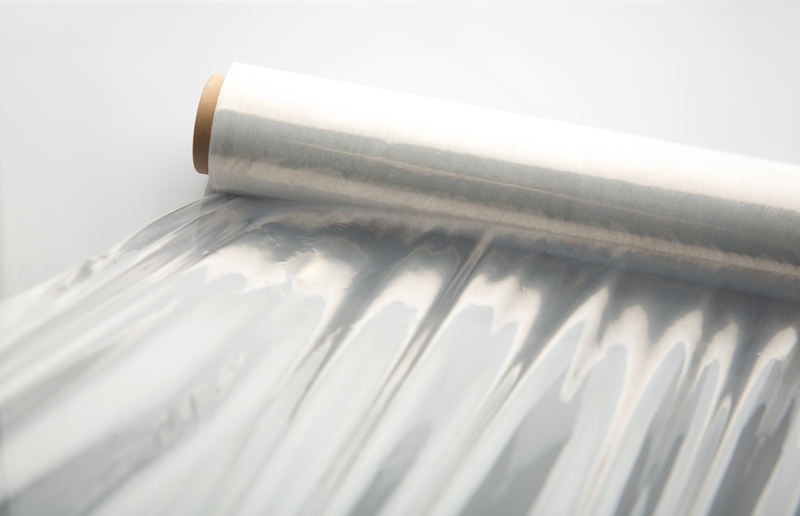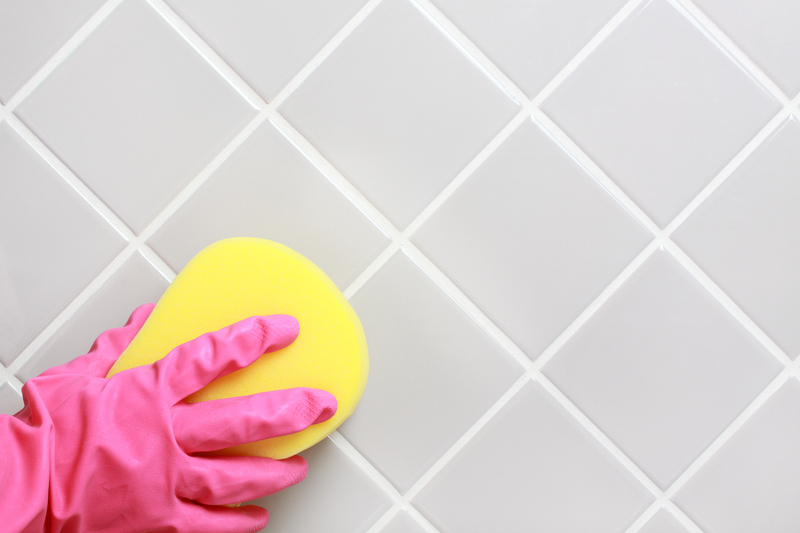Unveil Shiny Sills: The Mould Removal Process
Posted on 29/06/2025
Unveil Shiny Sills: The Comprehensive Mould Removal Process
Every homeowner dreams of a clean and healthy house, but those pesky black or green patches on window sills can shatter that illusion. Mould on window sills is not just an eyesore--it poses health risks and can compromise the structural integrity of your home. Unveiling shiny sills and ensuring a sparkling house requires a thorough understanding of the mould removal process. In this guide, we'll deep dive into the essential steps of removing mould, maintaining spotless sills, and preventing its return.

What is Mould and Why Does It Grow on Your Sills?
Mould is a type of fungus that thrives in damp, humid environments. Your window sills make the perfect breeding ground due to moisture from condensation, leaks, or poor ventilation. Mould spores are ever-present in the air, waiting for the right conditions to flourish.
- Temperature: Mould grows best in warm environments.
- Moisture: Water leaks, condensation, or high humidity encourage growth.
- Organic Material: Dust, wooden sills, or even paint provide food for mould.
Ignoring mould issues can lead to allergic reactions, respiratory problems, and damage to your property value. Understanding the root causes is the first step to unveil shiny sills and maintain a pristine living space.
Common Types of Mould Found on Window Sills
While there are hundreds of mould species, the following are most common on window sills:
- Cladosporium: Olive-green or black, typically found on wood and painted surfaces.
- Aspergillus: Appearing as black spots, it thrives in damp areas.
- Penicillium: Blue or green, often growing on wallpaper and insulation as well as sills.
- Stachybotrys (Black Mould): Highly toxic, appears as black patches on window frames and sills.
Identifying the mould species is key so you can select the right cleaning products and take appropriate safety precautions.
Signs Your Window Sills Need Mould Removal
Before you tackle the mould cleaning process, assess whether your sills are affected. Watch for these signs:
- Discoloration: Black, green, brown, or yellow patches or spots.
- Musty Odor: A persistent, earthy scent around your windows.
- Peeling Paint: Paint bubbles, chips, or flakes due to water damage and mould growth.
- Visible Growth: Fuzzy or slimy growth on or around the sill.
- Condensation: Frequent water droplets on glass signal excess moisture.
If you detect these issues, it's time to reveal shiny sills by beginning the mould eradication process.
Why It's Important to Remove Mould Promptly
Delaying the mould removal process can cause a cascade of problems:
- Health Hazards: Mould spores can trigger asthma, allergies, and infections--especially in children and seniors.
- Structural Damage: Prolonged growth eats away at wooden and painted surfaces, undermining structural soundness.
- Spread: Mould reproduces quickly, moving beyond the sills and contaminating walls, curtains, and air ducts.
- Reduced Home Value: Visible mould stains can turn off potential buyers and lower property prices.
Dealing with mould quickly is vital to unveil those shiny, flawless sills and create a healthier indoor environment.
The Step-by-Step Mould Removal Process
Preparation: Gear Up for Safety
Before starting, protect yourself from water, mould spores, and harsh chemicals:
- Gloves: Use rubber gloves to avoid skin contact.
- Face Mask or Respirator: Prevent inhaling spores.
- Splash Goggles: Shield your eyes from chemical splashes.
- Protective Clothing: Wear long sleeves and pants that can be easily washed afterwards.
Ensure good ventilation by opening windows and, if feasible, using a fan to direct air outside.
1. Remove Loose Debris and Dust
First, clear the window sill of plants, curtains, blinds, or any objects. Use a HEPA-filter vacuum or a damp paper towel to pick up loose debris, dust, and visible mould. Dispose of the debris in a sealed bag immediately.
2. Select Your Mould Cleaner
There are a variety of effective mould cleaning solutions:
- Commercial Mould Removers: These are formulated specifically for household mould and mildew.
- Household Bleach Solution: Mix one part bleach to ten parts water. *Note: test on a small area to avoid discoloration.*
- White Vinegar: Undiluted vinegar kills about 80% of mould species and is eco-friendly.
- Baking Soda Paste: Mix baking soda with water. Good for scrubbing surfaces gently.
- Hydrogen Peroxide: Pour 3% concentration in a spray bottle--great for porous surfaces.
Choose a cleaner based on your preferences and the severity of the mould infestation to reveal shiny sills beneath the grime.
3. Apply the Cleaning Solution
- Spray your chosen solution liberally on the mouldy patches. Let it sit for 10-15 minutes to penetrate and loosen the mould.
- Using a non-abrasive scrubbing brush or sponge, gently scrub the surface in a circular motion.
- For stubborn patches, repeat the application and scrubbing process.
*Important: Do not mix cleaning agents, such as bleach and ammonia, as this creates toxic fumes!
4. Rinse and Dry
- After cleaning, wipe the sill with a damp cloth soaked in plain water to remove residue.
- Dry the window sill completely with an old towel or microfiber cloth. Damp sills encourage mould to return.
5. Disinfect and Deodorize
Apply a disinfectant or a second treatment of vinegar or hydrogen peroxide to kill any remaining spores and neutralize odors. Allow it to air dry.
6. Dispose of Cleaning Materials Properly
- Place sponges, towels, and gloves used for cleaning in a sealed plastic bag and discard.
- Launder any reusable clothing in hot water straight away.
How to Prevent Mould from Returning
After revealing sparkling sills, you'll want to keep them that way. Here are proactive strategies to prevent mould regrowth:
- Improve Ventilation: Use exhaust fans, open windows, or install trickle vents to circulate fresh air.
- Reduce Condensation: Use double-glazed windows and insulate sills to minimize moisture buildup.
- Dehumidify: Employ a dehumidifier in damp rooms.
- Prompt Repairs: Fix leaks in roofs, frames, or around sealants quickly.
- Regular Cleaning: Wipe sills every week with a vinegar-based solution.
- Monitor with Humidity Meters: Keep indoor humidity below 60% to discourage mould.
Ongoing care is the secret to sustaining shiny sills and enjoying a mould-free home environment.
Professional vs DIY Mould Removal: Which is Best?
For small patches of mould (less than 1 square meter), DIY mould cleaning is usually safe and cost-effective. However, if you notice any of the following, call in professionals:
- Large Affected Areas: If the mould covers a wide area (>10 square feet).
- Persistent Regrowth: Mould keeps coming back despite best efforts.
- Structural Damage: Crumbling plaster, soft wood, or stained walls.
- Severe Health Symptoms: Breathing difficulties, constant headaches, allergies.
Certified mould removal specialists possess industrial-grade cleaners, protective gear, and advanced drying tools to completely remove and prevent mould recurrence.
Mould Removal Products: What Works Best?
The right cleaning product can make mould elimination quicker and more effective. Below is a rundown of the best products for mould removal on window sills:
- Concrobium Mold Control: Non-toxic, eliminates, and prevents regrowth on multiple surfaces.
- RMR-86 Instant Mold & Mildew Stain Remover: Commercial strength, removes stains fast.
- Homemade Vinegar Solution: An eco-friendly, affordable alternative.
- Twin Oxide or Hydrogen Peroxide Sprays: Highly effective and less damaging than bleach.
- Microfiber Cloths: Capture spores without spreading them into the air.
Always follow manufacturer's instructions and conduct a test patch before widespread application, especially with chemical products.
Myths and Mistakes about Mould Removal
Don't let misinformation put your health at risk. Here are common myths you should avoid:
- Myth: "Just painting over the mould solves the problem."
Truth: It can worsen mould growth underneath and cause the paint to peel. - Myth: "Bleach is always best."
Truth: Bleach kills some surface mould, but may not penetrate porous materials. Vinegar or specialized solutions work better for deep-rooted patches. - Myth: "Once it's gone, it won't come back."
Truth: Mould prevention requires ongoing attention to moisture and ventilation.
Avoid these mistakes and rely on proven best practices for sparkling, healthy sills.
Frequently Asked Questions about Mould Removal on Window Sills
- How often should I check my sills for mould?
Inspect monthly and after heavy rainfall or cold spells. - Can I use essential oils to prevent mould?
While some oils (like tea tree) have anti-fungal properties, they're best used alongside regular cleaning regimes. - Is black mould on sills dangerous?
Yes, Stachybotrys ("black mould") produces mycotoxins harmful to health. Remove it as soon as possible. - Are wooden sills at higher risk for mould?
Yes, porous materials like wood absorb water and trap spores, making them more susceptible.

Conclusion: Enjoy Shiny Sills and a Healthier Home
Unveiling shiny sills is more than a cosmetic task--it's an essential part of maintaining your home's health and value. With the right knowledge, cleaning products, and preventative steps, you can banish mould for good. Whether you're removing mould from sills for the first time or seeking to prevent its return, this comprehensive guide empowers you to act with confidence.
For persistent or extensive mould infestations, don't hesitate to consult a professional. Your home deserves nothing less than clean, vibrant window sills and an inviting, safe atmosphere. It's time to unveil shiny sills and reclaim the beauty of your living space!
Key Takeaways to Unveil Shiny Sills:
- Identify and address moisture sources to target the root of the problem.
- Use effective mould removal solutions and always work safely.
- Prevent regrowth with regular cleaning and improved ventilation.
- Act quickly--the sooner you clean, the easier it is to unveil those gleaming sills!
Start your journey towards a cleaner, healthier home today with this expert guide to the mould removal process--and let your shiny sills be the pride of your household.




